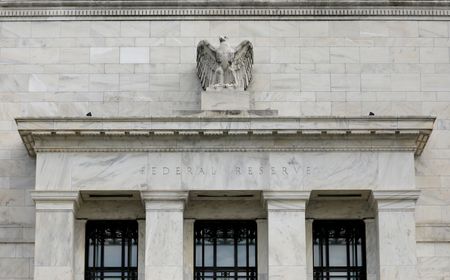(Reuters) -U.S. economic activity expanded modestly in recent weeks, although it was flat in some regions and declined in a couple of others, the Federal Reserve said on Wednesday in a report that showed firms growing more pessimistic about the outlook.
Moreover, the U.S. central bank’s latest collection of anecdotes from contacts across its 12 districts, known as the “Beige Book,” noted inflation pressures had eased somewhat and were expected to continue doing so, a key “soft data” indication that the Fed’s aggressive interest rate hikes may have started to turn the tide against the highest inflation in 40 years.
“Some contacts noted solid pricing power over the past six weeks, while others said cost pass-through was becoming more difficult as customers push back,” said the report, which was compiled by the Dallas Fed from contributions received through Oct. 7. “Looking ahead, expectations were for price increases to generally moderate.”
That was a notable contrast with the previous report from late summer that had concluded most Fed contacts then had “expected price pressures to persist at least through the end of the year.”
The view that inflation was moderating was accompanied by concerns over the economic cost of the Fed’s rate hikes aimed at bringing those price pressures to heel: Demand was generally seen as softening.
“Outlooks grew more pessimistic amidst growing concerns about weakening demand,” the Fed said.
The central bank’s latest summary of observations from its business, community and labor contacts was released in the run-up to its Nov. 1-2 policy meeting.
IMPACT OF RATE HIKES
With the latest data showing inflation by the Fed’s preferred measure continuing to run at more than three times the central bank’s 2% target, despite what has already been the most aggressive round of Fed policy tightening in 40 years, the report may do little to temper expectations for a fourth straight 75-basis-point rate hike in three weeks.
Policymakers have signaled they will keep raising rates until they see inflation cooling, even as they acknowledge that higher borrowing costs will likely translate to slower growth, softer labor markets and a likely increase in unemployment.
U.S. job growth has been strong, and the unemployment rate in September fell to 3.5%. While underlying price pressures for goods have eased as supply chains heal, those of services, which tend to be stickier, continue to rise rapidly.
But as Fed policymakers lift their benchmark overnight lending rate, currently in the 3.00%-3.25% range, nearer to the 4.50%-5.00% range that most of them think will be needed to drive down inflation, they and outside analysts are looking for evidence that the policy tightening is starting to do its work.
Such signs could usher in a slower pace of rate hikes that Fed Chair Jerome Powell has said will come “at some point.” So far, they have been hard to see in much of the broad economic data beyond that tracking housing, where a sharp deceleration is underway.
Reports into the Cleveland Fed, for one, said higher prices and interest rates were constraining demand, not only for housing but increasingly for motor vehicles as well.
“Auto dealers reported flat or decreasing sales, noting that consumers had become wary of higher payments because of increased interest rates and higher vehicle prices,” the Cleveland Fed reported.
Overall, higher interest rates as a factor affecting demand, especially in both the residential and commercial property and construction sectors, earned more than two dozen mentions in the latest Beige Book.
The report showed the job market remained tight on balance, though perhaps not as stringent as before. There were also early indications of employers preparing for a downturn in activity with spot reports of hiring freezes and some layoffs.
The Philadelphia Fed said: “Contacts described a heightened expectation of a recession, and businesses intensified preparations for a downturn: Multiple firms instituted a hiring freeze, others initiated planning for layoffs if business conditions did not improve, and one firm noted broad-based layoffs were already under way.”
(Reporting by Dan Burns; Editing by Paul Simao)

